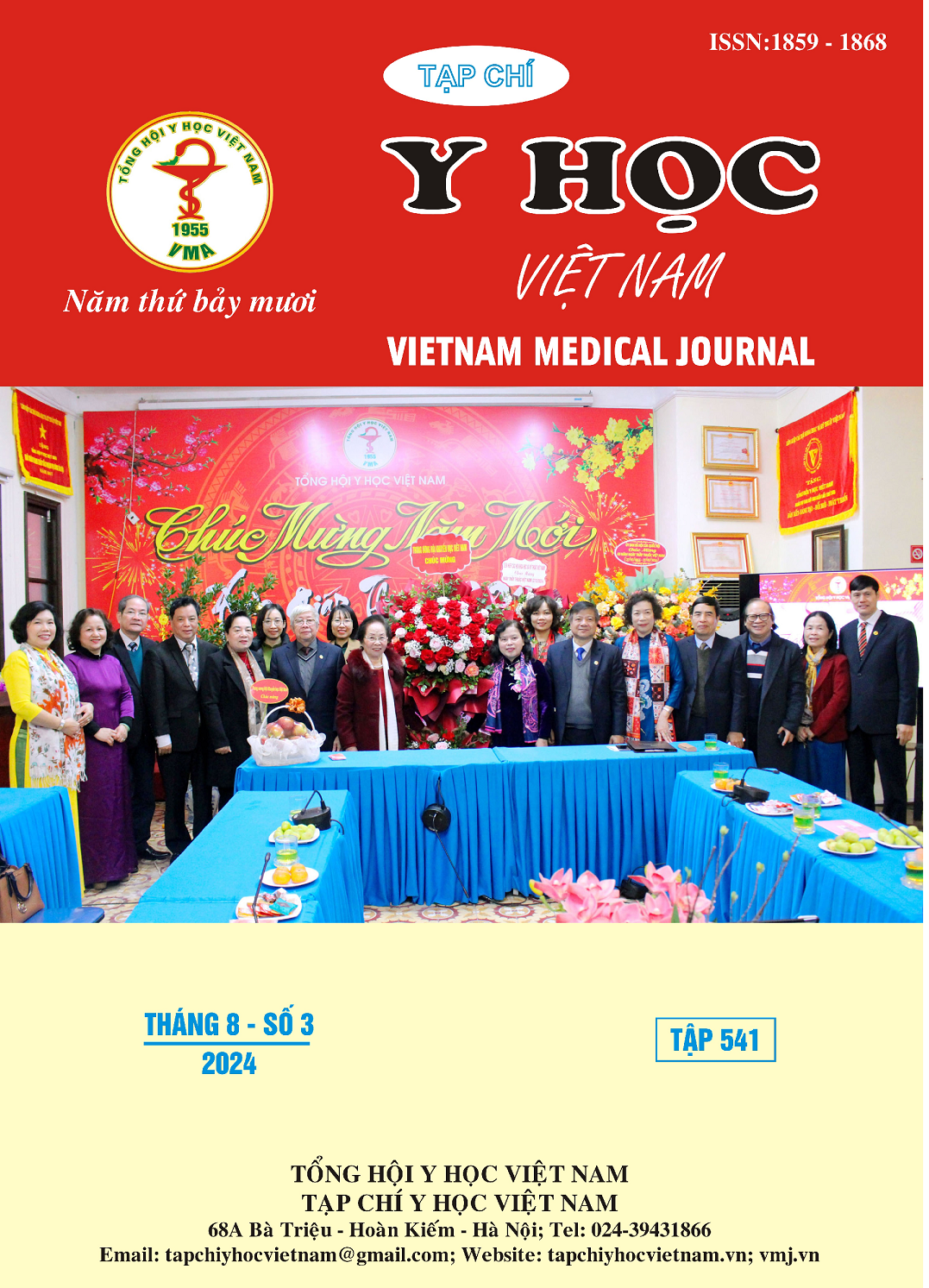THE CHARACTERISTIC OF ROTATOR CUFF INJURY ON 3.0 TESLA MAGNETIC RESONANCE IMAGING IN SUBACROMIAL IMPINGEMENT SYNDROME
Main Article Content
Abstract
Objectives: The aim of this study was to evaluate the prevalence of tendinitis, partial and complete in magnetic resonance images of patients with subacromial impingement syndrome. Subjects and methods: This was a cross – sectional study of 60 patients with subacromial impingement syndrome was scanned with 3.0 MRI at 354 Military Hospital from 4th, 2023 to 4th, 2024. Results: The most frequently tendon injury was supraspinatus muscle tendon (98,3%); The majority of cases had 1 damaged tendon (43,3%) and 2 damaged tendons (40%); the frequently encountered finding of rotator cuff injury was tendinosis (53,3%) followed by partial tears (36,2%); Among partial tears, the articular surface type of tear was the most common (57,9%) and the most patients were low-level tear (42,1%). Conclusions: The rotator cuff injury is common in subacromial impingement syndrome and supraspinatus muscle tendon is the most common injury site.
Article Details
Keywords
Shoulder Magnetic Resonance Imaging; Rotator Cuff.
References
2. Koganti D.V, Lamghare P., Parripati V.K et al. (2022), "Role of magnetic resonance imaging in the evaluation of rotator cuff tears", Cureus, 14(1).
3. Nguyệt; Đặng Bích, Long; Nguyễn Tiến, Lệnh; Bùi Văn et al. (2021), "Giá trị của cộng hưởng từ trong chẩn đoán hội chứng hẹp dưới mỏm cùng vai", Vietnam Jounal of Community Medicine, 62(6), pp. 23 - 30..
4. Ravikanth R., Majumdar P. (2019), "Magnetic resonance imaging diagnosis of rotator cuff tears in subacromial impingement syndrome: A retrospective analysis of large series of cases from a single center", Apollo Medicine, 16(4), pp. 208-212.
5. Ardic F., Kahraman Y., Kacar M. et al. (2006), "Shoulder impingement syndrome: relationships between clinical, functional, and radiologic findings", American journal of physical medicine rehabilitation, 85(1), pp. 53-60..
6. Freygant M., Dziurzyńska-Białek E., Guz W. et al. (2014), "Magnetic resonance imaging of rotator cuff tears in shoulder impingement syndrome", Polish journal of radiology, 79, pp. 391.
7. Sasiponganan C., Dessouky R., Ashikyan O. et al. (2019), "Subacromial impingement anatomy and its association with rotator cuff pathology in women: radiograph and MRI correlation, a retrospective evaluation", Skeletal Radiology, 48, pp. 781-790.
8. Jacobson J.A, Lancaster S., Prasad A. et al. (2004), "Full-thickness and partial-thickness supraspinatus tendon tears: value of US signs in diagnosis", Radiology, 230(1), pp. 234-242.
9. Kumar G., Phatak S.V, Lakhkar B. et al. (2017), "Diagnostic role of magnetic resonance imaging in rotator cuff pathologies", Journal of Datta Meghe Institute of Medical Sciences University, 12(1), pp. 7.


